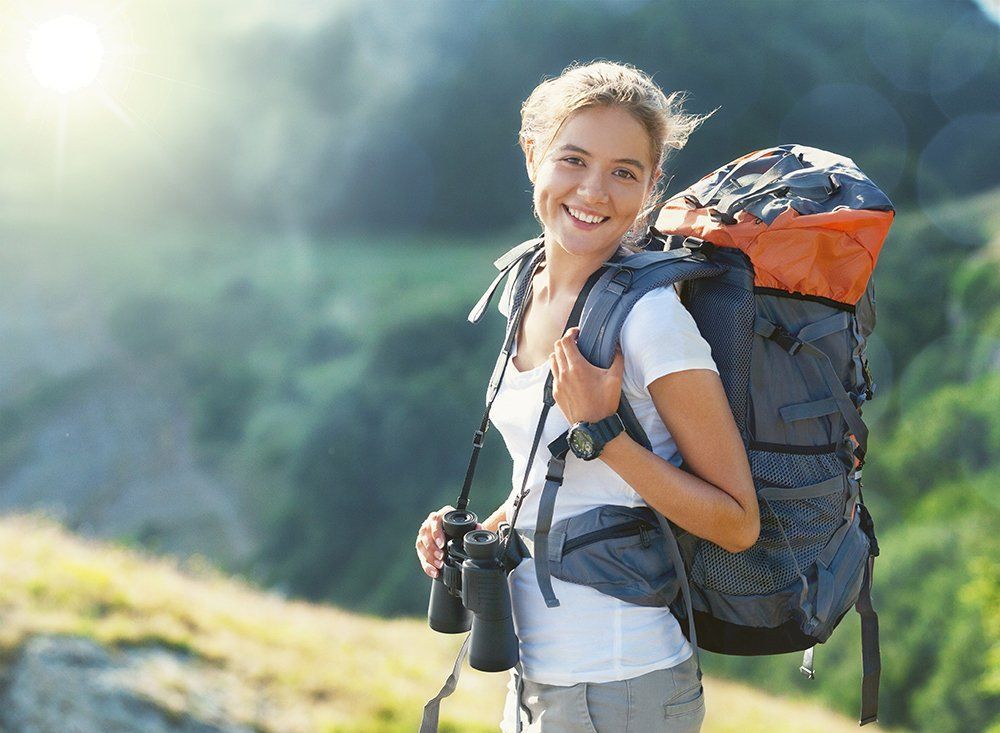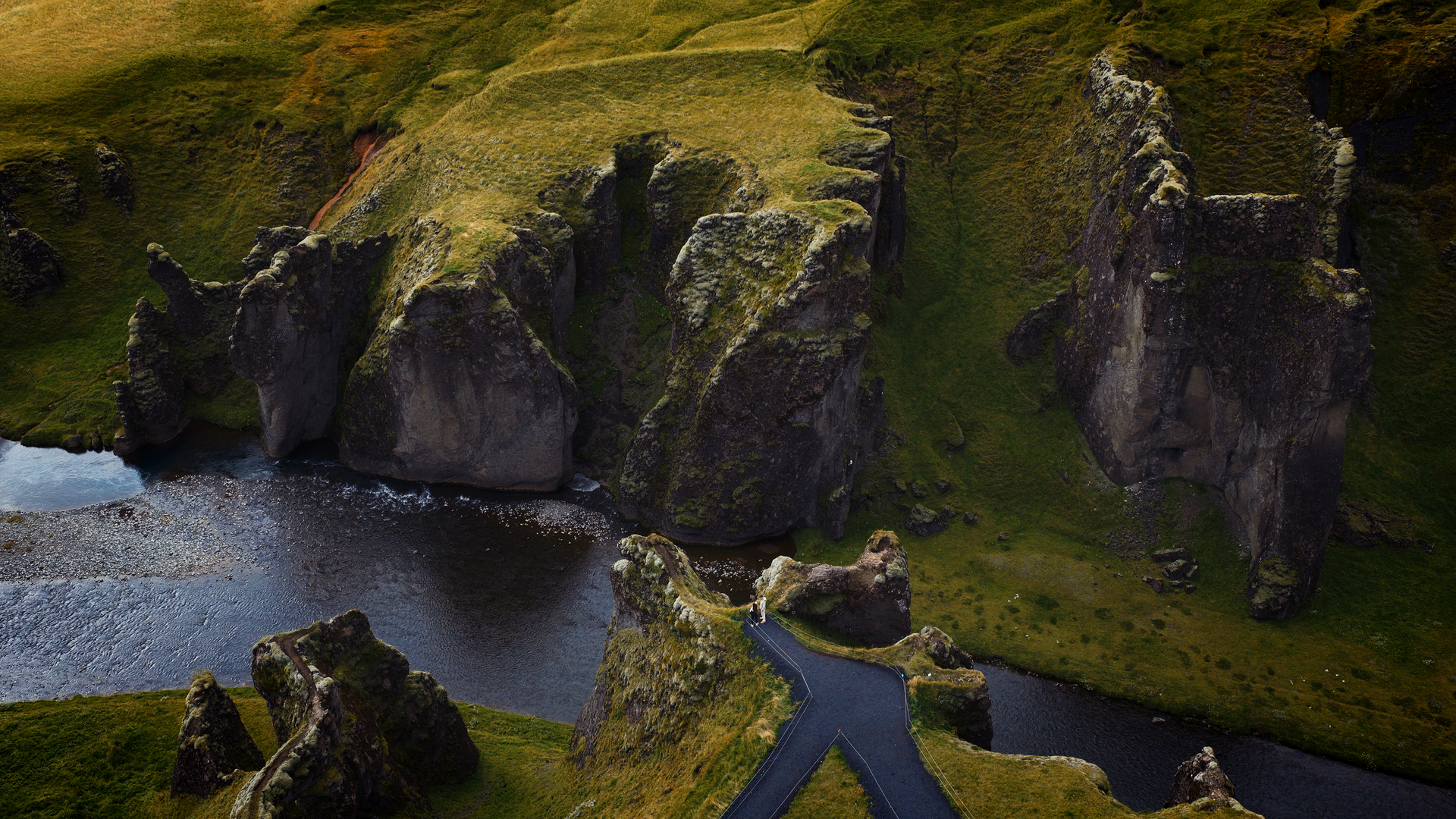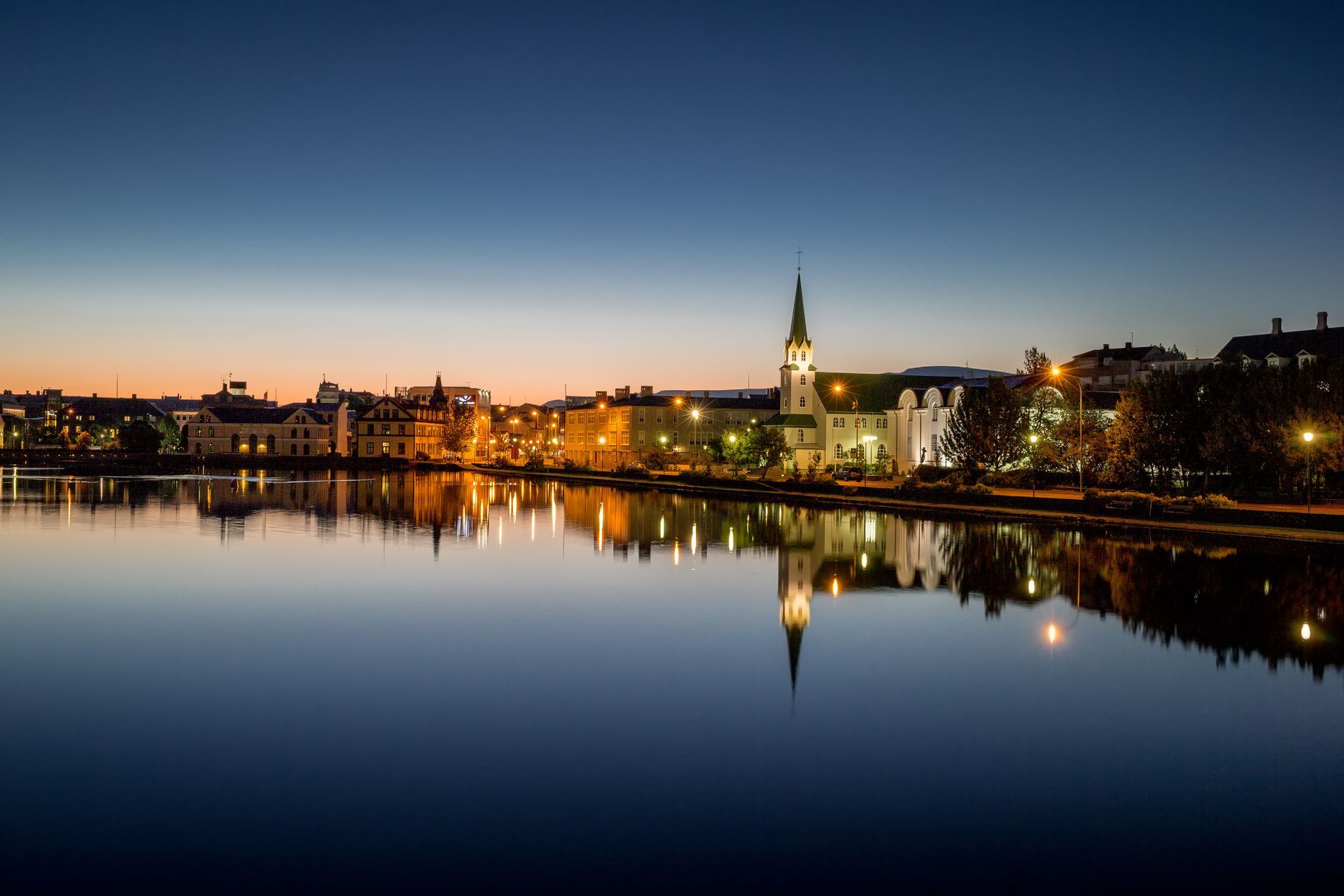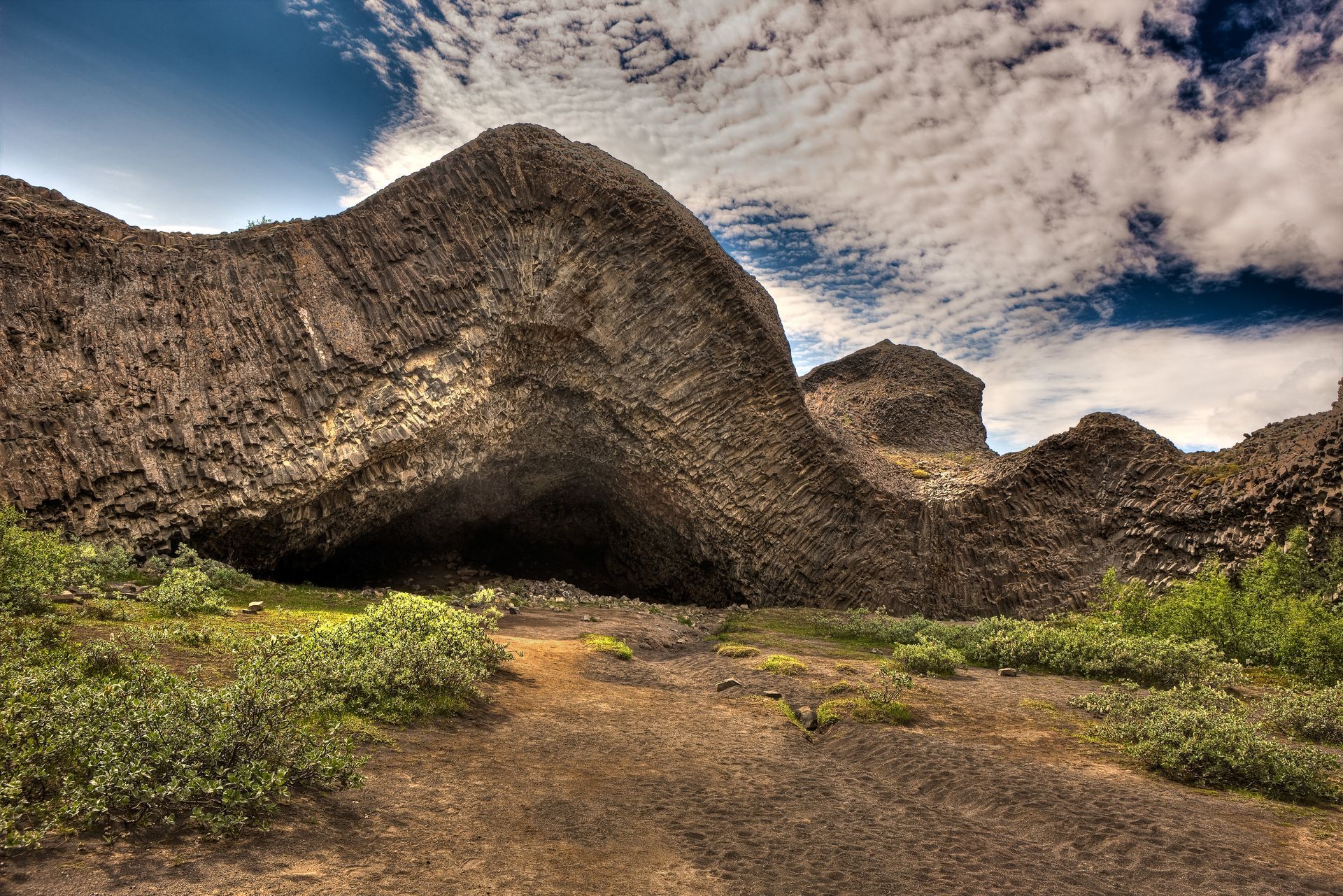by Nanna Gunnars
•
25 July 2025
No matter where you look in Iceland, you’re bound to see stunning landscapes and impressive attractions. You can admire stunning waterfalls and otherworldly black sand beaches, hike over glaciers and soak in hot springs and then marvel at the northern lights, even all in one day! Icelandic nature gets a lot of attention, but the country’s capital, Reykjavík, also has a lot to offer. Most people make Reykjavík their base and go out on day tours, or they either start or end their trip in this Nordic capital. Here’s a list of some of the must-see attractions in Reykjavík to help you plan your stay. Take a dip in Reykjavík Capital Region First of all, you’re likely to spend your first or last day in Reykjavík. Reykjavík is a 40-minute drive from the international airport that’s based in Keflavík, but on the way you can make a stop at one of Iceland’s most popular destinations, the Blue Lagoon. Many people choose to start or end their Iceland vacation with a relaxing spa session in the lagoon’s milky blue waters. The Blue Lagoon is far from being the only hot spring or spa you can enjoy in Iceland, but it’s by far the most famous one. That means that it will have a lot of other visitors, but the lagoon itself is very large so you can still find a quiet spot by yourself. Icelanders love to immerse themselves in hot water, and within Reykjavík you can find 20 different public bathing pools to do so. Most are local swimming pools with a very moderate entry fee, but there is also the Sky Lagoon, an upscale spa with a bar and beautiful views over the sea. The prices are more expensive, but it’s a great way to treat yourself. Most visitors base themselves centrally in Reykjavík, so the nearest swimming pools are Vesturbæjarlaug in the west part of town, Sundhöll Reykjavíkur which is located just behind Hallgrímskirkja church, and the largest pool is Laugardalslaug, located within the city’s recreation center Laugardalur. On a sunny day in summer, you can also head to the city’s beach, Nauthólsvík beach, where there is a hot tub to warm up in between dips in the cold North Atlantic sea. The beach is right next to a small, forested hill called Öskjuhlíð where visitors can find some remnants from World War II, and on the top of the hill there is the Perlan natural museum and café, featuring 360° views over the city. Perlan is built out of several water tanks and features a large glass dome on its head. Explore Reykjavík on Foot Reykjavík is a small city and feels more like a large town than a capital city. Most attractions within the city can be explored on foot, and you can get acquainted with the city center in just a day. The tallest building in the city center is the Hallgrímskirkja church, towering over the colorful houses at 245 feet (74.5 m). Visitors can go to the top and get a view over the whole city and nearby mountains, such as the prominent Mt Esjan. Inside you’ll also find a huge organ, and this notable building is tastefully lit up in the nighttime, making it a great model for photographs. The street leading up to the church is called Skólavörðustígur but is often referred to as the Rainbow Street as it is painted in rainbow colors (and the Icelandic name can be quite a mouthful!). Iceland is a very queer friendly destination. At Skólavörðustígur you’ll find local jewelry and ceramic shops as well as cute cafés and nice restaurants. Make sure you check out the New Nordic cuisine, famous for its succulent lamb and fresh fish seasoned with locally grown herbs. Adjacent to the Rainbow Street is Laugavegur, the city’s main shopping street. It won’t take long to stroll both Laugavegur and Skólavörðustígur and check out some of the nearby streets to find some cute local shops. Look out for the Cat Café and secondhand stores, pet a cat on the street whilst checking out some street art and stop by a bakery to indulge in a sweet treat like snúður, kleina or marriage bliss. If you need a quick savory treat, then you can’t go wrong with picking up an Icelandic hot dog downtown. They’re made from lamb meat and served with raw and fried onions, as well as 3 different sauces; ketchup, sweet mustard and a mayonnaise based one called remúlaði and are ever-so-popular with both locals and visitors. If you’re a foodie, then you can book the Reykjavík Food Walk, a walking tour that will introduce you to different types of Icelandic cuisine and inform you about local history and culture. In Reykjavík’s downtown you’ll find the Icelandic parliament, and in front of it a small park that fills up with locals in summertime having pic-nicks on the grass. Swans, geese and other feathery locals attract visitors at the City Pond and accept food donations, and right on the pond is the City Hall, which is open to the public, often containing some public events. There are also two parks downtown, next to and surrounding the central City Pond. The parks are called Hallargarður and Hljómskálagarður and are always open to the public. Hljómskálagarður has some climbing playgrounds for kids, but mostly these two parks are used for public gatherings, such as during city festivals. The old harbor is also worth having a stroll through. It’s filled with nice restaurants and bars, and the option to go out on a whale watching or a puffin spotting tour. If you saunter a little further, you’ll end up at an area called Grandi, where you’ll find some delicacy shops, including a butcher and a fantastic ice-cream shop. Also in that area are the Marshall House museum, the Whale Museum and Fly Over Iceland, which replicates flying over some of Iceland’s most gorgeous landscapes. Indulge in the Local Culture Iceland is internationally known for a great music scene. This is the land of popular singers and bands such as Björk, Sigur Rós, Kaleo, Of Monsters and Men and Laufey, as well as prominent composer Hildur Guðnadóttir, amongst many more. So, it’s not a bad idea to go check out some of the local art scene and maybe catch some artists before they become international superstars. There are several places that offer weekly jazz or live music, the scene changes quite frequently so be sure to ask around before your arrival or just after you arrive. A popular music venue is Hús Máls og Menningar, a bookshop that hosts live music events daily. Mengi is a more alternative venue, where you might find some electronic and/or experimental music. And you might also find some interesting experimental musical events at the church Fríkirkjan, situated right by the City Pond. Next to the harbor is the impressive concert hall Harpa, which has open access to all visitors. Harpa contains beautiful architecture and make sure to check what events are going on. Harpa houses the Icelandic symphony orchestra, and frequently offers local and international acts including music, ballet, opera, stand-up comedy or different kinds of festivals. Another venue downtown that often hosts shows in English is the Tjarnarbíó theater, located right next to the City Hall and the City Pond. This is the home for the independent theater scene in Iceland, showcasing touring shows from abroad, local shows in different languages, dance performances, music events and stand-up comedy. On the other side of the City Hall is one of the city’s oldest theaters, Iðnó, which hosts a plethora of events, including regular tango and salsa nights, as well as plays, concerts or festival events. The National Theater (Þjóðleikhúsið) and the City Theater (Borgarleikhúsið) put on more elaborate shows. The National Theater also offers cabaret nights and improv nights in the basement venue (Þjóðleikhúskjallarinn), which are accessible for international visitors and often include international guest acts. Meanwhile the City Theater frequently puts on large musicals, so even if you don’t understand the language, you can still enjoy the spectacle. Bíó Paradís is a fantastic art cinema downtown, that’s been internationally recognized as one of the coolest cinemas in the world. It’s got great decor, a stylish bar and cool artistic film posters adorning its walls. Films are screened in their original language, either with Icelandic or English subtitles. Quite often there is some sort of festival going on in the city. Some of the bigger festivals include the biannual Reykjavík Arts Festival, or the annual film festivals RIFF and Stockfish, music festival Airwaves, Reykjavík Fringe Festival and Reykjavík Dance Festival as well as Design March, Reykjavík Pride and Culture Night. Many smaller ones exist as well, including music, dance, cuisine and theater. Check out the Reykjavík Jazz Festival, Vaka Folk Festival, Sequences Art Festival, Food and Fun Festival, Street Food Festival and many more. For a rainy day, there are plenty of museums to choose from, with anything from contemporary art, photography or history to more specialized ones such as the whale or punk museum—or even the ever-so-popular penis museum! The National Museum (Þjóðminjasafnið) gives you a great insight into Iceland’s culture since it was settled, as does the Settlement Exhibition 871±2. For modern art check out the Reykjavík Art Museum which is spread out over three buildings: Hafnarhús by the old harbor, Kjarvalsstaðir by Klambratún park and Ásmundarsafn in Laugardalur recreational center. The National Gallery of Iceland focuses on art from the 19th and 20th century, while Nýlistasafnið is a modern artist-run gallery located within the Marshall house. The nightlife also packs a punch, with bars and clubs to suit different ages and music styles. There are relaxed wine or cocktail bars to choose from, as well as livelier bars that offer more of a party. Check out Vínstúkan 10 Sopar, Apéro or Bodega for a relaxed glass of wine, head to Kiki Queer Bar for a drag performance or a cheeky dance, Kaffibarinn that’s a dance and music establishment in town or Prikið for hip hop and rap. Many cafés turn into bars, then turn into bars with dancing in downtown Reykjavík. That means you can have your morning coffee in the same place you danced on a table until 3AM the previous night. The club scene is much smaller, although there are still a few clubs to choose from, such as Auto. The scene here changes rapidly, so it’s best to ask around for the best nightlife when you arrive, depending on your music taste and if there are any specific events going on. Many bars offer decent happy hour prices and none of them have entry fees, and at weekends the nightlife goes on until 5AM. Explore More of Reykjavík with a Bike or Car If you have access to a car, or want to rent a bike, and are spending a few days in Reykjavík then you can also head to Grótta lighthouse, which is right by a nature reserve with rich birdlife. Grótta lighthouse is a popular destination to watch the sunsets in the summer, or the northern lights in the winter. There’s a cute beach there and a small warm footbath that’s free to attend, just bring a towel and perhaps some snacks for a cozy evening out in nature. Likewise, you can head to the Elliðaárdalur valley to find a tranquil green oasis in the middle of the city, complete with small waterfalls and salmon fishing rivers. A couple of cafés and museums are situated nearby, such as the Chromo Sapiens permanent installation in Höfuðstöðin and the open-air historical folk museum Árbæjarsafn where visitors can get a glimpse into the living conditions of people in Reykjavík in earlier times. A bit more central is Reykjavík’s recreational area, Laugardalur, where you’ll find the largest swimming pool in the country, an ice rink, several sport facilities and a small botanical garden. The botanical garden has a lovely café that’s open in the summertime, and close by is one of Reykjavík Art Museum’s locations, Ásmundarsafn which focuses on sculpture. Reykjavík’s neighbouring town Hafnarfjörður is lovely and worth a visit. This small town is also known as the Viking Village and is embedded into lava fields. It’s got a cute center by its harbor, including some shops, cafés, restaurants, a music venue and a cute little park. If you’re looking for more nature within the city, or by the city borders, then you can explore Álftanes, where the presidential residence Bessastaðir is located, or go to the city’s nature reserve Heiðmörk. Heiðmörk is a forested area that’s popular for joggers, horseback riders and cross-country skiers in wintertime. The city also boasts two ski areas, Bláfjöll and Skálafell. However, despite the name of the country, there’s barely enough snow in wintertime to keep regular opening hours at the ski resorts. All in all, you could spend several days in Reykjavík and not fit in all there is to see!













